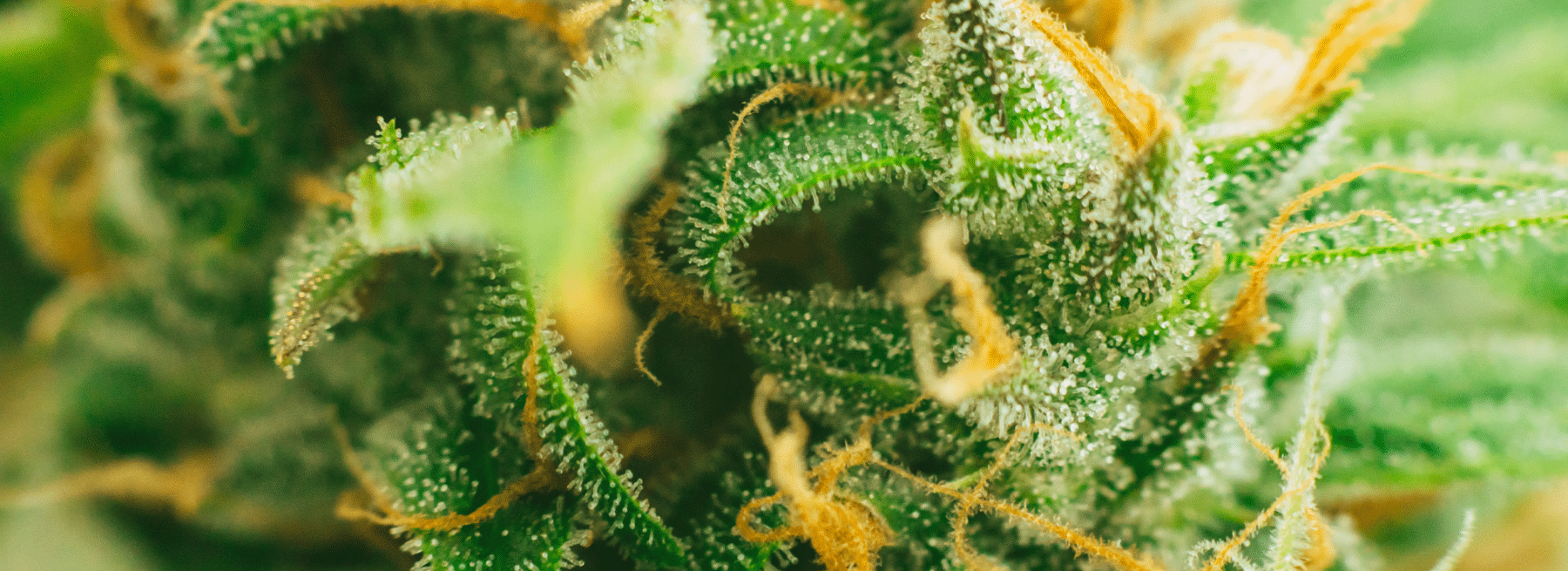Cannabis businesses have to stay on top of the fragile cannabis supply chain in order to support the industry’s continuous growth. A cannabis market analysis report from Grand View Research shows the North American legal cannabis market reached $12.4 billion in 2021. From 2022 to 2030, its expected compound annual growth rate (CAGR) is 15.3%.
Another report from Grand View Research reveals the U.S. cannabis market is on target to reach $40 billion by 2030. Largely responsible for the increase is the legalization of recreational and medical marijuana in many states.
With the cannabis supply chain issues, can these numbers stay on track? The problem is that both Grand View Research reports say the pandemic has greatly shackled the cannabis supply chain. The crisis has affected the export industry, which impacts distribution systems.
“As a result of the global ban, the supply of cannabis in dispensaries has plummeted,” writes the authors. “The supply chain has been disrupted as a result of lockdowns in major countries, affecting both import and export businesses.”
A big challenge for the cannabis industry is that 22% of the Grand View Market survey respondents state they have used more cannabis during the pandemic than they did prior to the crisis. This is a good problem to have, but can the industry support it?
Factors Affecting the Cannabis Supply Chain
There are three factors that distress the cannabis supply chain.
1. Shortage of materials
The first factor affecting the cannabis supply chain is the shortage of raw materials. The materials that play the biggest role in the industry are not what you expect. One is steel, which is found everywhere, especially in the construction of new buildings, which includes cannabis dispensaries.
Thanks to steel being in short supply, its prices have soared. A Reuters story explains that unfilled orders of steel recently reached the highest levels while inventory is at its lowest level in years. That said, it’s no surprise the price of steel has hit the highest peak in 13 years.
The other material shortage is petroleum products, like oil-based materials, also found almost everywhere. Oil prices dropped to some of the lowest levels in history during the early days of the pandemic and have come roaring back as their demand rose. As with any increase in demand, there has been a massive surge in prices.
2. Logistic issues
The second factor wreaking havoc on the cannabis supply chain is logistics. Ships and ports have been struggling to strike a balance between imports and exports. The U.S. has been importing far more than exporting. Shipping problems and the shortage of truck drivers available have thrown the logistics out of whack.
Remember that famous cargo ship that blocked the Suez Canal for almost a week? It blocked more than 400 ships and cost $400 million per hour in goods. This was $5.1 billion per day! A report from Moody’s Analytics tells of how the supply chain problems will persist and impact consumers and businesses. This is despite seeing some global economic recovery.
3. Increase of cannabis legalization
With more states legalizing marijuana, there has been a surge in demand for products and the opening of new marijuana-related businesses and dispensaries. These new businesses will need equipment and supplies. Some existing facilities may expand and open other facilities. All of these businesses will be competing for equipment and supplies. Hence, the shortage of materials becomes a problem for the industry.
All of these will lead to more customers. To support the growing demand and number of customers, dispensaries will need to hire more staff. The cannabis supply chain may limp for a while as it will contend with shortages and delays.
How Theft Threatens the Cannabis Supply Chain
Any theft occurring in the cannabis supply chain is at high risk of threatening the industry’s profits. Cultivation businesses need to protect themselves from plant thefts and manufacturing facility break-ins. Some of these businesses do not have adequate perimeter security, product storage security, and video surveillance. Thefts occurring during the cultivation stage will threaten the supply down the line.
The distribution process is also at a risk of the shortage of truck drivers and transportation security. Some smaller dispensaries have employees delivering products in their own vehicles with zero security.
Most thefts occur at the dispensaries. This is because they often have an open-store layout without enough security layers. Retailers in particular are heavily targeted because cannabis remains a cash-heavy industry. To make matters worse, Security Magazine quotes an expert who says the bulk of the losses is due to internal theft by the dispensary’s own employees.
An MJ Biz Daily article confirms internal theft is a big problem. In fact, it’s believed internal theft alone results in 90% of the loss of products. Since dispensaries hold a lot of cash, employees may find themselves tempted to pocket a little cash from time to time. They think no one will notice the small amounts going missing.
Cannabis-based businesses must also comply with stringent laws. They often contain security requirements, such as video surveillance, that must be followed to the letter. The advantage of security cameras is that they can help catch internal theft.
The Best Option to Protect the Cannabis Supply Chain
There’s a reason why many jurisdictions across North America require remote video surveillance and provide specific details in their laws. While the requirements vary by location, they tend to cover frame rate and resolution, video camera placement, length of video recording retention, and more.
Companies that don’t comply with regulations will pay a high price. This is why it’s crucial to work with a security vendor that knows the cannabis industry. You want to ensure the implementation of video surveillance is done right the first time.
Another element you want in your video surveillance is a system health check. You know how the cameras always seem to be broken on TV shows when detectives ask about the camera footage? This is less likely to happen to you when you work with a company that conducts regular system health checks. These checks verify everything is working or catches problems early. Often, these can be fixed without stepping foot on your premises.
Power outages happen to all of us. There’s no avoiding that. You can plan for it by having a backup plan for power outages. The system health checks also help here.
Choosing a Security Partner to Protect the Cannabis Supply Chain
It’s possible to have the correct video surveillance system and still fail compliance requirements because you overlooked a specific detail. Due to the complexity of the industry’s regulations, experts strongly recommend selecting a video surveillance company that knows how to install, maintain, and monitor security cameras specifically for cannabis businesses. This is why it’s vital to do your due diligence in choosing the right security vendor.
Some locations in North America require an access control system. It’s possible to implement an integrated security system that contains an access control system with video surveillance to enhance security and remote monitoring. An access control system lets you manage who can enter limited-access areas in a dispensary or cannabis business. This helps reduce the risk of unauthorized access and internal theft.
Cannabis security has different needs and requirements than automotive dealerships and retail stores. This yet another reason why you’ll want to find a security provider with experience in the cannabis industry.
A remote video surveillance company with experience in the marijuana industry will know how to install the system correctly the first time. You can’t afford to pay a penalty for their mistakes. In fact, you can help protect your cannabis business by asking the security consulting company about an installation guarantee clause. If something fails compliance or goes wrong during the implementation, it will protect you and put the onus on the security company.
Out of the top five common non-compliant items in the cannabis industry, two are security related, making it imperative to work with an experienced security provider. When you don’t, your business could end up paying the price. The cannabis supply chain is already brittle as it stands thanks to the myriad of issues addressed above. The last thing you need is to have something happen in your business with no recourse.
The partnering of video analytics and trained monitoring operators watching your business can help catch potential problems and lead to action before theft or damage happens. The advantage of remote video surveillance with monitoring is that it’s a proactive solution that helps deter crime and minimize damages. Stealth Monitoring offers all of this along with many other services.
Stealth works with cannabis dispensaries across the United States and Canada. We have experience in both the industry itself and complying with the unique laws that apply to your business. We also have partnerships with many law enforcement agencies. They often put a high priority on our calls because they know we have video verification that something is happening and it’s not a false alarm.
How do you find the right security vendor with experience in the marijuana industry? Ask for cannabis case studies, client referrals, and videos. You might want to review this cannabis security guide to learn about the elements of a comprehensive security system and how it can help you save on costs, achieve regulatory compliance, and fortify security. Ready to learn more? Contact us.
Read more about cannabis security:
- Cannabis Compliance: 4 Things You Need to Protect Your Business
- What Are the 3 Reasons for Commercial Security in the Cannabis Industry?
- 4 Best Security Tips for Cannabis Dispensaries

